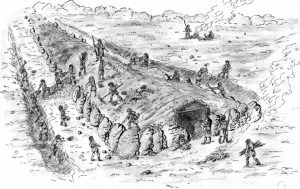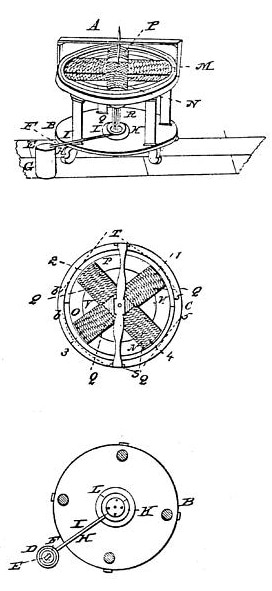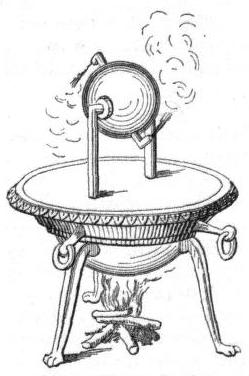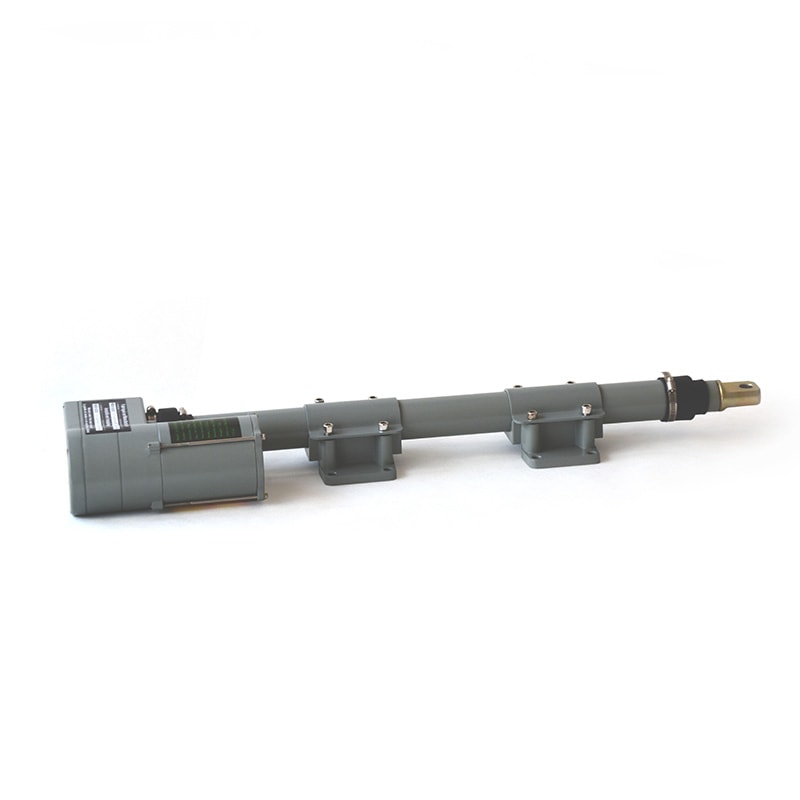From the stone age to the age of automation
 Nowadays, in many everyday activities, we are replaced by machines. The vacuum cleaner will clean the floor, the coffee machine will brew coffee at the selected time, and the entrance gate will open without us leaving the car. Linear actuators have revolutionized production halls, accelerating production and helping people (although of course someone has to look after them sometimes :) ). However, life was not that easy in the past. In order to transport large, heavy objects, man had to use the strength of their own muscles. Sometimes not one person was needed, but several or several dozen people. Let’s think how much trouble it was to build the Egyptian pyramids or megalithic tombs that we can find in Poland? Over time, however, we began to look for ways to make our work easier. This is also how the wheel, lever, ramps and other useful inventions were invented. They made everyday life much easier. However, we were only at the stage of inventing the wheel and the actuators were still a song of the far future. In order to construct them, many, many years had to pass, where men had to understand the processes of mechanics, chemistry and physics. Simple linear movements, such as breaking the gate with a battering ram, still had to be done manually.
Nowadays, in many everyday activities, we are replaced by machines. The vacuum cleaner will clean the floor, the coffee machine will brew coffee at the selected time, and the entrance gate will open without us leaving the car. Linear actuators have revolutionized production halls, accelerating production and helping people (although of course someone has to look after them sometimes :) ). However, life was not that easy in the past. In order to transport large, heavy objects, man had to use the strength of their own muscles. Sometimes not one person was needed, but several or several dozen people. Let’s think how much trouble it was to build the Egyptian pyramids or megalithic tombs that we can find in Poland? Over time, however, we began to look for ways to make our work easier. This is also how the wheel, lever, ramps and other useful inventions were invented. They made everyday life much easier. However, we were only at the stage of inventing the wheel and the actuators were still a song of the far future. In order to construct them, many, many years had to pass, where men had to understand the processes of mechanics, chemistry and physics. Simple linear movements, such as breaking the gate with a battering ram, still had to be done manually.
Experiments with pressure, i.e. the creation of steam engines
We are now in ancient Egypt, more precisely in Alexandria conquered by the Romans. In the 1st century AD, the first steam engine was designed there. It was a simple device consisting of a rotating cylinder with two nozzles with opposing outlets. After the water of the invention had been poured in and brought to a boil, the escaping steam set the cylinder in rotation. However, the invention did not find a specific application and was forgotten. To finish our story, we have to move to England from the second half of the 17th century. Meet Denis Papin, the French physicist who built the first reciprocating steam engine in 1698. In this device, with the help of steam, we can introduce the piston into a linear motion. So we are slowly approaching the industrial age where Thomas Newcomen desiged an atmospheric steam engine that in 1711 facilitated the work of miners in the Wolverhampton coal mine. 52 years later, James Watt built the first steam engine based on this device. These inventions made it possible in later years to create the first pneumatic compressor, which gave rise to the first pneumatic systems and, in later years, hydraulic systems.
The first actuators
 Meanwhile, in 1821, the English physicist and chemist Michael Faraday presented an experiment called “electroplates”. It consisted in dipping one end of the wire into the mercury filling the vessel. After placing a bar magnet in the center of the vessel and connecting the battery to the top of the wire and mercury, the wire began to rotate around the magnet. This experience meant that when we moved to the USA in 1837, we would meet Mr. Thomas Davenport, who had just built the first working electric motor and was going to patent it. From the conversation with him, we would learn that the designer used him to operate a drill and a wood lathe. These inventions will help us a lot in the near future. Coming back to the cylinders, we focus on very hard times, namely World War II. There, for the first time pneumatic and hydraulic actuators were used, and Xhiter Anckeleman contributed significantly to this. Pneumatic actuators began to be used to replace valves for pipes, and with the advancement of equipment digitization in the 1960s, it became easier to control flow and pressure in pipe systems.
Meanwhile, in 1821, the English physicist and chemist Michael Faraday presented an experiment called “electroplates”. It consisted in dipping one end of the wire into the mercury filling the vessel. After placing a bar magnet in the center of the vessel and connecting the battery to the top of the wire and mercury, the wire began to rotate around the magnet. This experience meant that when we moved to the USA in 1837, we would meet Mr. Thomas Davenport, who had just built the first working electric motor and was going to patent it. From the conversation with him, we would learn that the designer used him to operate a drill and a wood lathe. These inventions will help us a lot in the near future. Coming back to the cylinders, we focus on very hard times, namely World War II. There, for the first time pneumatic and hydraulic actuators were used, and Xhiter Anckeleman contributed significantly to this. Pneumatic actuators began to be used to replace valves for pipes, and with the advancement of equipment digitization in the 1960s, it became easier to control flow and pressure in pipe systems.
The birth of the electric actuator
We are slowly approaching our time and our journey is reaching its culmination point. It’s 1979 and Bent Jensen is trying to find an upgrade to his friend’s wheelchair. So he designs the world’s first electric linear actuator. This type of invention quickly found application in agriculture, where it could be used, for example, to automate the elements of a forage harvester. Over time, people found that why not automate other components with additional electronics and control systems? This is how actuators began to be used in factories, cars, robots, and later in everyday life. This is also how we come back to 2019, where we can order electric actuators at an affordable price. Then we can apply them to the gate, hatch, window or anything else we want to put in motion. More and more often they replace pneumatic and hydraulic actuators as they do not need complicated accessories to operate. Additionally, they are also easier to use.
This is what ends our story about how people for centuries had to explore the secrets of mechanics, physics, chemistry and other fields, so that they could finally automate a huge amount of activities and not carry large stones ? And who knows what other doors to the future can be opened by actuators ? Time will tell and maybe one day we will come back to this article to add another part of the story.
 biuro@elektrobim.pl
biuro@elektrobim.pl 91 817 14 69
91 817 14 69









